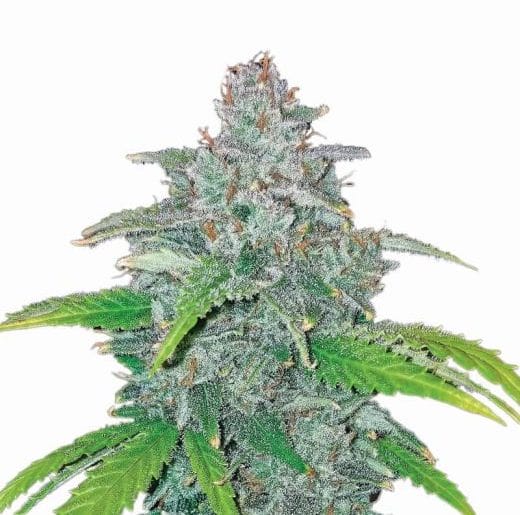Introduction
Welcome to this in-depth exploration of marijuana genetics, where we will delve into the fascinating world of cannabis strains. Whether you#8217;re a seasoned enthusiast or just curious about the subject, this article aims to demystify marijuana genetics and provide you with valuable insights. By the end of our journey, you#8217;ll have a deeper understanding of the various strains available and how their genetics contribute to their unique characteristics and effects.
What are Marijuana Genetics?
Marijuana genetics refer to the genetic makeup of cannabis plants, which determines their physical traits, chemical composition, and overall characteristics. Just like humans inherit traits from their parents, cannabis strains inherit their traits from their parent plants. These genetics play a crucial role in shaping the plant#8217;s appearance, aroma, taste, and effects.
The Importance of Understanding Marijuana Genetics
Understanding marijuana genetics is essential for both consumers and cultivators. For consumers, knowing the genetic background of a strain can help predict its effects, allowing for a more tailored and enjoyable experience. Cultivators, on the other hand, can utilize genetic knowledge to breed new strains, optimize cultivation techniques, and ensure consistent quality and potency.
Sativa, Indica, and Hybrid: Exploring the Genetic Families
Sativa Strains
Sativa strains are known for their uplifting and energizing effects. With tall and narrow plants, sativas thrive in warm climates. They are often associated with cerebral effects, creativity, and increased focus. Some popular sativa strains include Durban Poison, Sour Diesel, and Jack Herer.
Indica Strains
Indica strains, in contrast, are renowned for their relaxing and sedating properties. These plants are shorter and bushier, better suited for cooler climates. Indicas are commonly associated with physical relaxation, pain relief, and promoting sleep. Notable indica strains include Northern Lights, Granddaddy Purple, and Afghan Kush. This article also provides some good triangle kush cannabis strain info.
Hybrid Strains
Hybrid strains are a blend of sativa and indica genetics, offering a balanced experience with varying effects. By crossbreeding different strains, cultivators can create hybrids that combine the best characteristics of each parent. These strains can lean towards either sativa-dominant or indica-dominant, offering a wide range of effects and flavors.
Unraveling the Genetic Code
Marijuana genetics are determined by the plant#8217;s DNA, just like any other living organism. Cannabis plants have two main types of chromosomes, autosomes and sex chromosomes. The autosomes carry most of the plant#8217;s genetic information, while the sex chromosomes determine the plant#8217;s gender.
How Are Strains Created?
Cultivators employ various breeding techniques to create new strains or stabilize existing ones. Some popular methods include:
- Crossbreeding: Crossing two different strains to combine their desirable traits.
- Backcrossing: Breeding a strain with one of its parent plants to reinforce specific traits.
- Selective Breeding: Repeatedly breeding plants with desirable traits to create a stable and consistent strain.
Factors Affecting Strain Characteristics

Several factors influence the characteristics of a cannabis strain:
- Terpenes: These aromatic compounds give each strain its distinct smell and can also contribute to its effects.
- Cannabinoids: The cannabinoids, such as THC and CBD, are responsible for the plant#8217;s psychoactive and therapeutic properties.
- Growing Conditions: Environmental factors, such as temperature, humidity, and light intensity, can influence a strain#8217;s growth and development.
FAQs
What is the role of terpenes in marijuana genetics?
Terpenes play a crucial role in marijuana genetics as they contribute to the strain#8217;s aroma, taste, and effects. They interact with cannabinoids to produce specific therapeutic benefits and influence the overall experience.
Can marijuana genetics affect the potency of a strain?
Yes, marijuana genetics can significantly impact the potency of a strain. Different genetic combinations result in varying levels of cannabinoids, including THC and CBD, which directly influence the strain#8217;s potency.
Is it possible to determine a strain#8217;s genetics through visual inspection?
While visual inspection can offer some clues about a strain#8217;s genetics, it#8217;s impossible to determine the precise genetic makeup without genetic testing. Lab analysis is necessary to obtain accurate information.
Do all strains within the same genetic family produce similar effects?
While strains within the same genetic family share certain characteristics, variations can still occur due to other factors like terpene profiles and growing conditions. Therefore, it#8217;s important to consider these additional factors when predicting effects.
Can marijuana genetics be patented?
In some cases, specific marijuana genetics can be patented if they meet the criteria for patentability, such as novelty and non-obviousness. However, the laws regarding marijuana genetics patents can vary in different jurisdictions.
How do marijuana genetics contribute to strain diversity?
The diverse genetic combinations found in cannabis strains are the driving force behind their vast range of characteristics, including appearance, aroma, taste, and effects. It is through these genetics that we experience the wide array of strains available today.
Conclusion
In conclusion, understanding marijuana genetics is key to unlocking the mysteries behind different strains. By unraveling the genetic code, exploring the genetic families of sativa, indica, and hybrid strains, and considering the factors that shape strain characteristics, we can appreciate the rich diversity and unique qualities that each strain offers. So, whether you#8217;re a connoisseur looking for your next favorite strain or a cultivator aiming to develop new varieties, the world of marijuana genetics holds endless possibilities.




